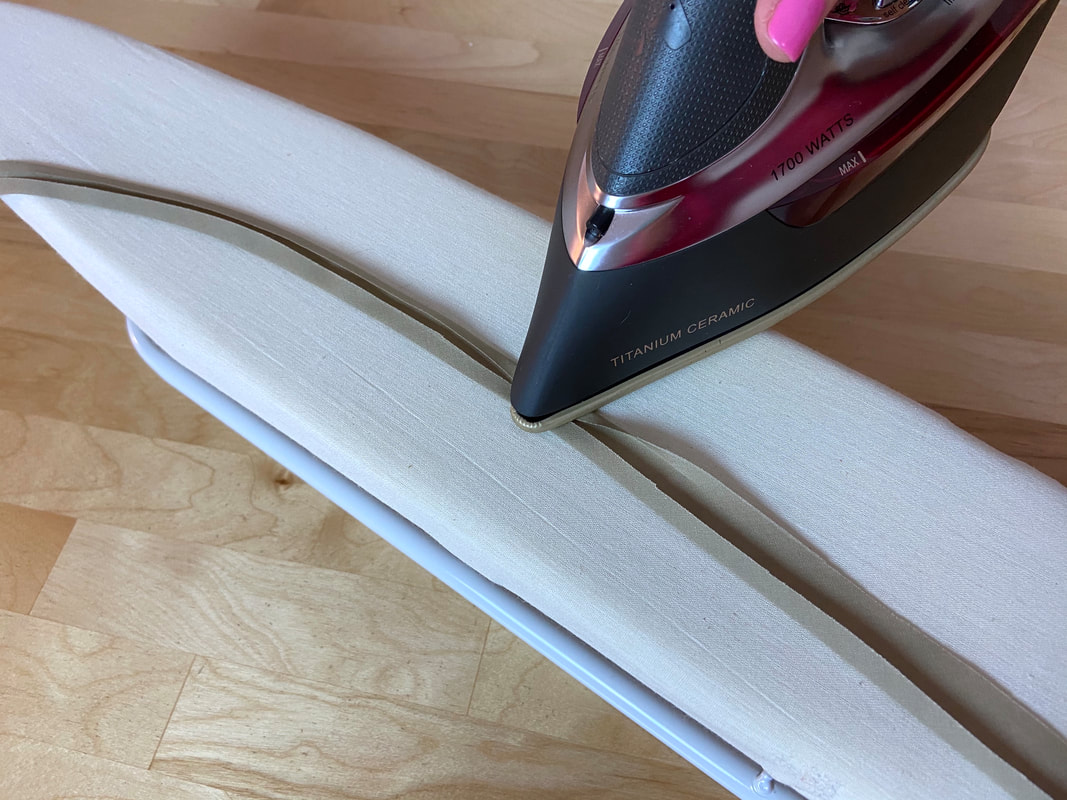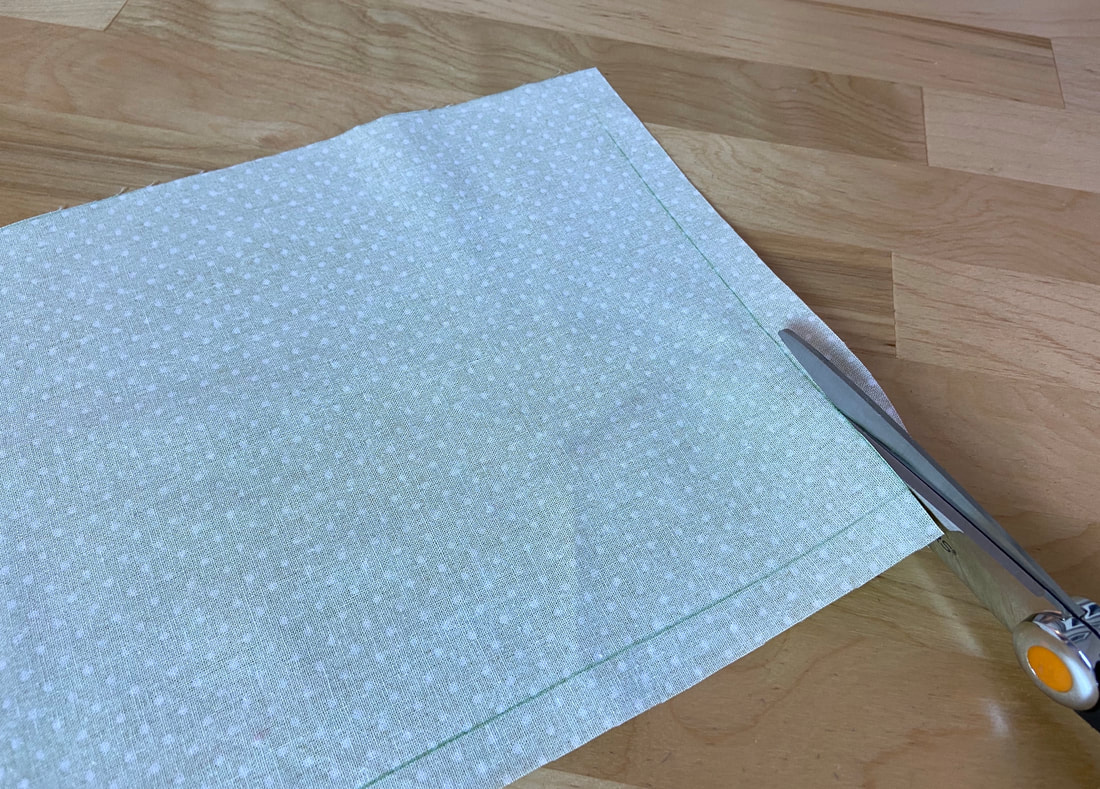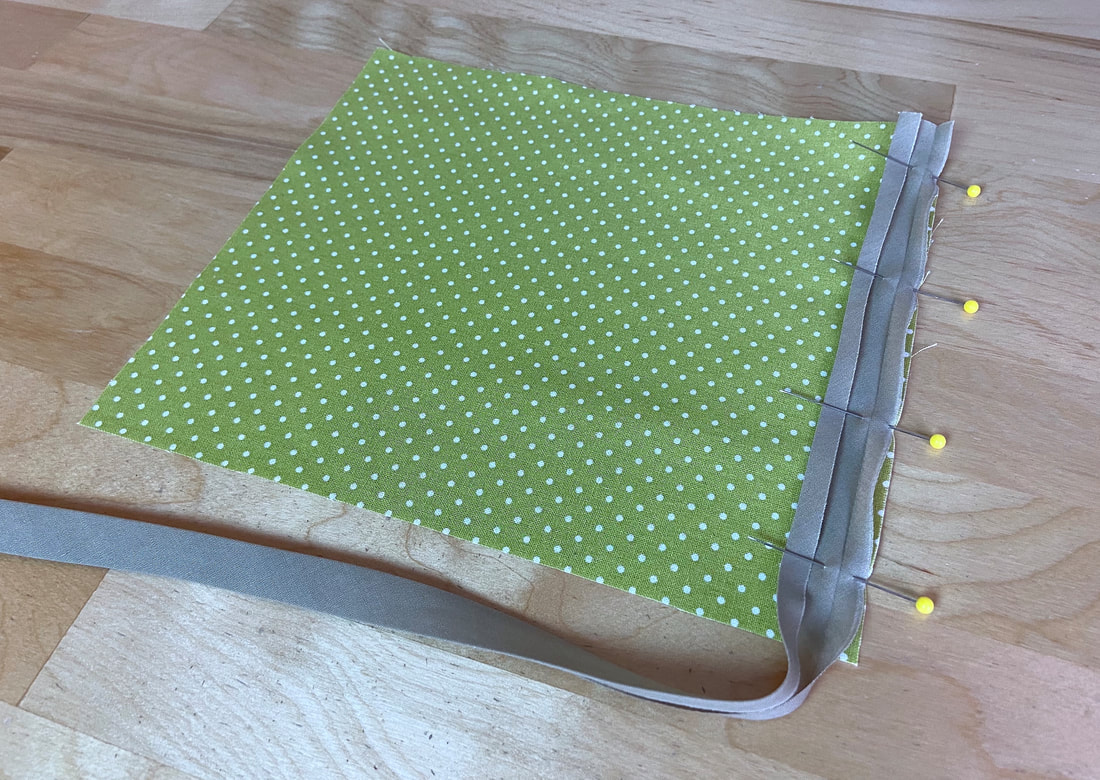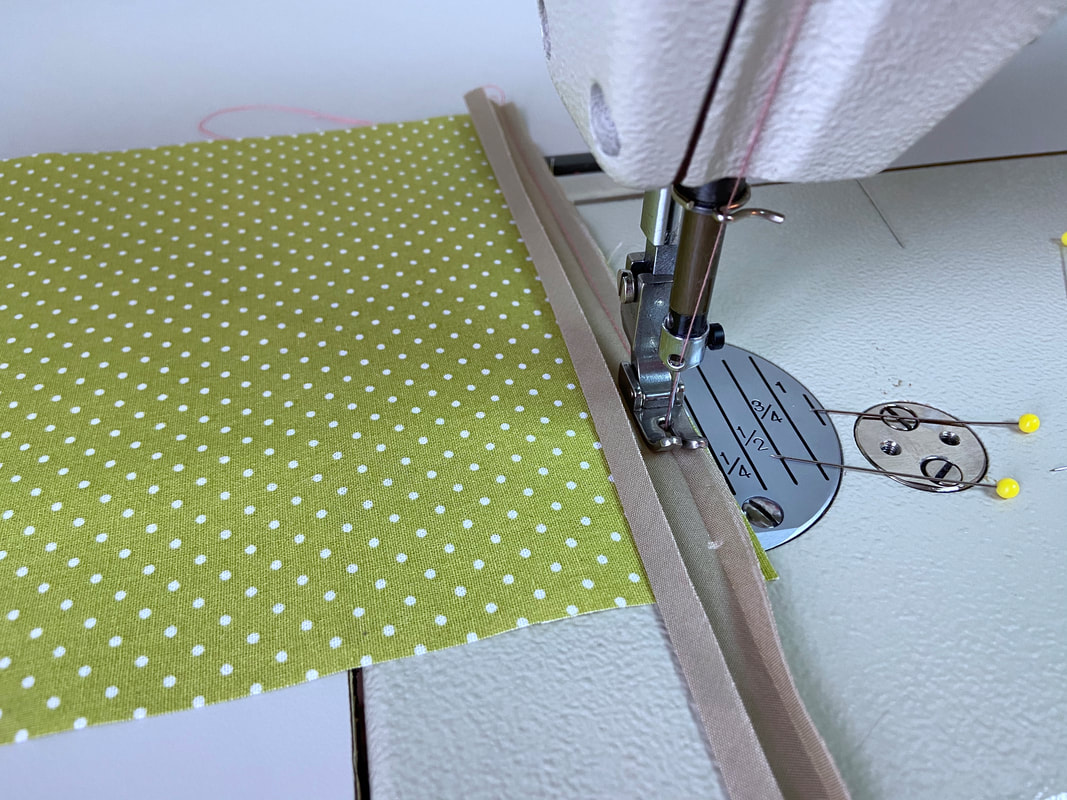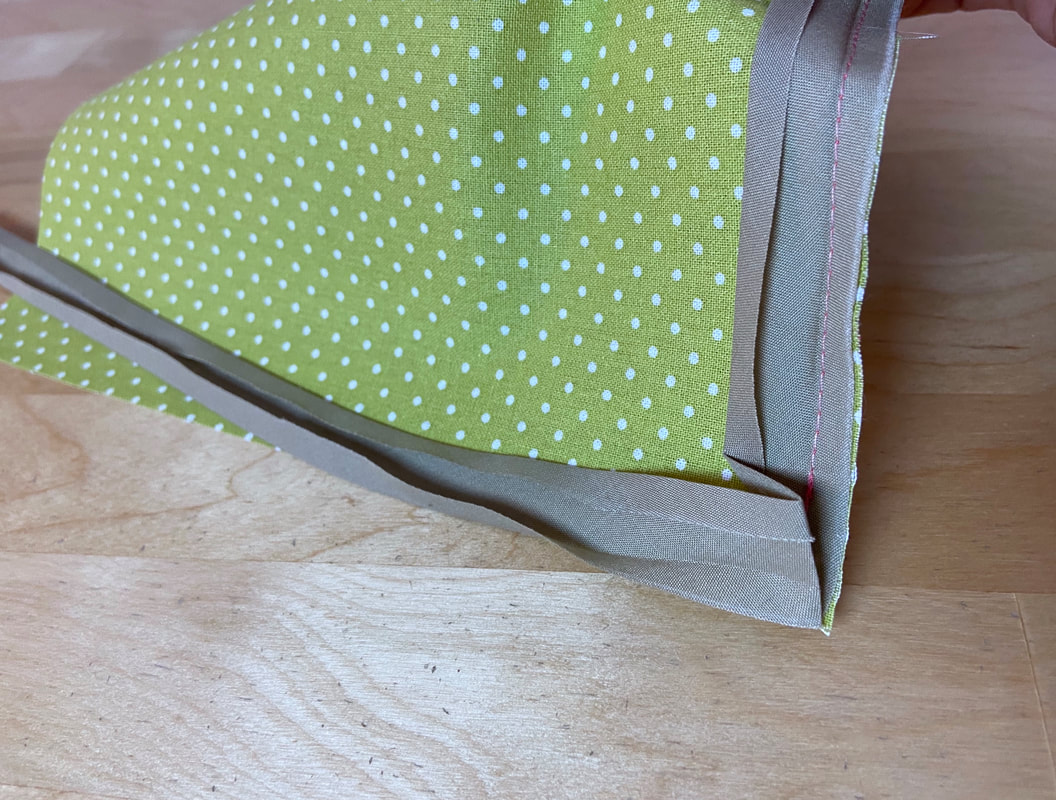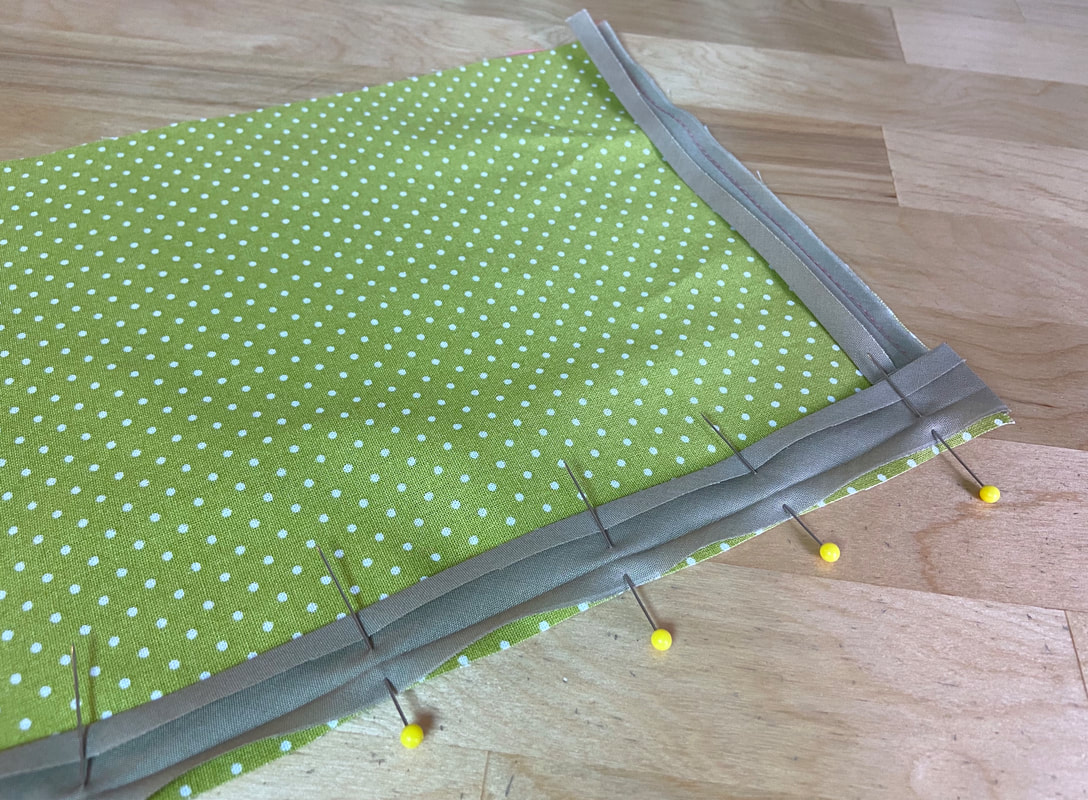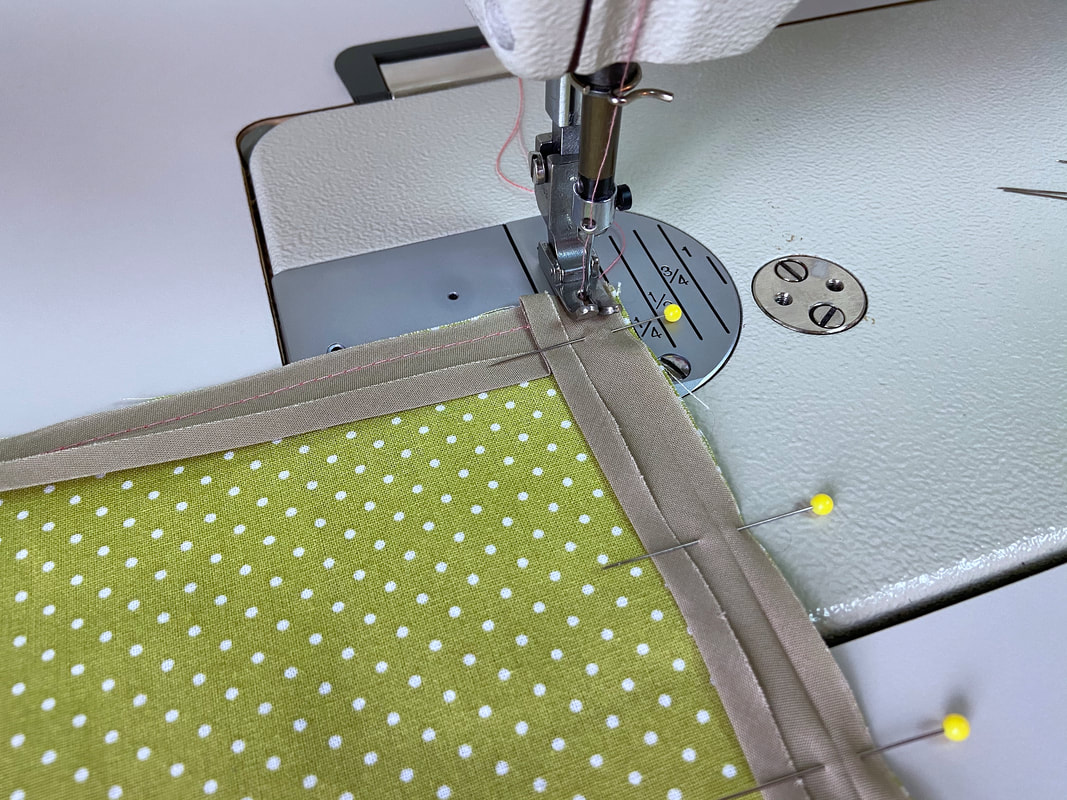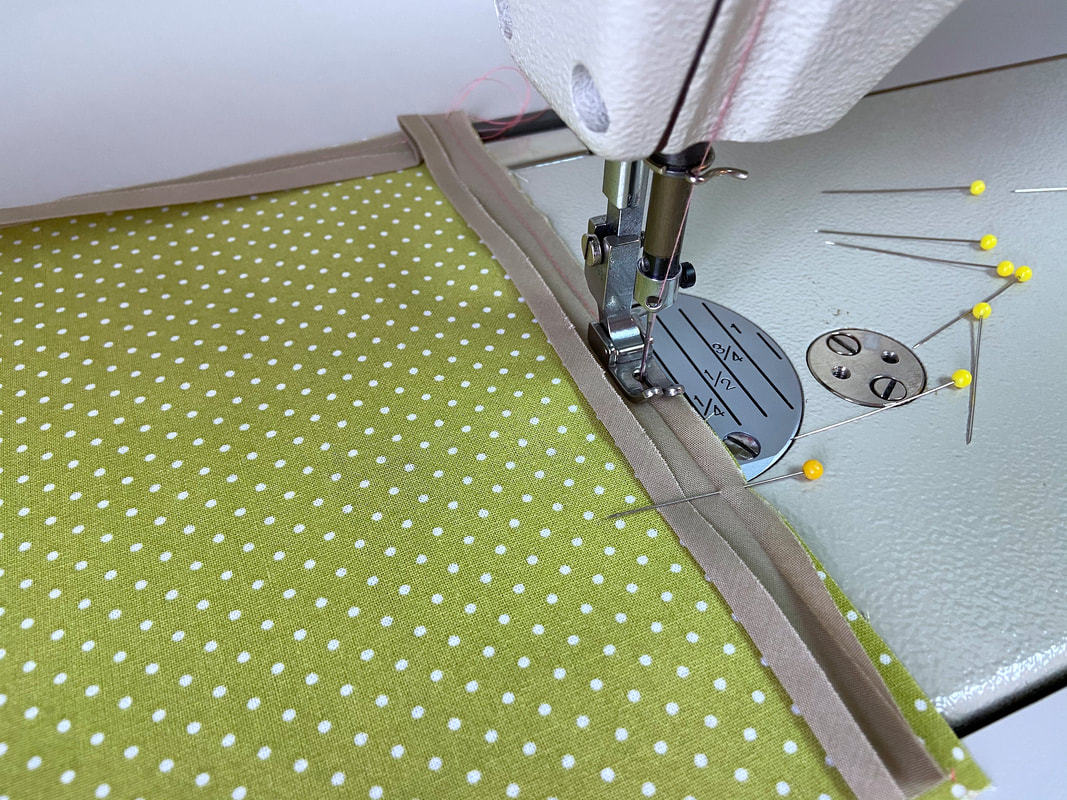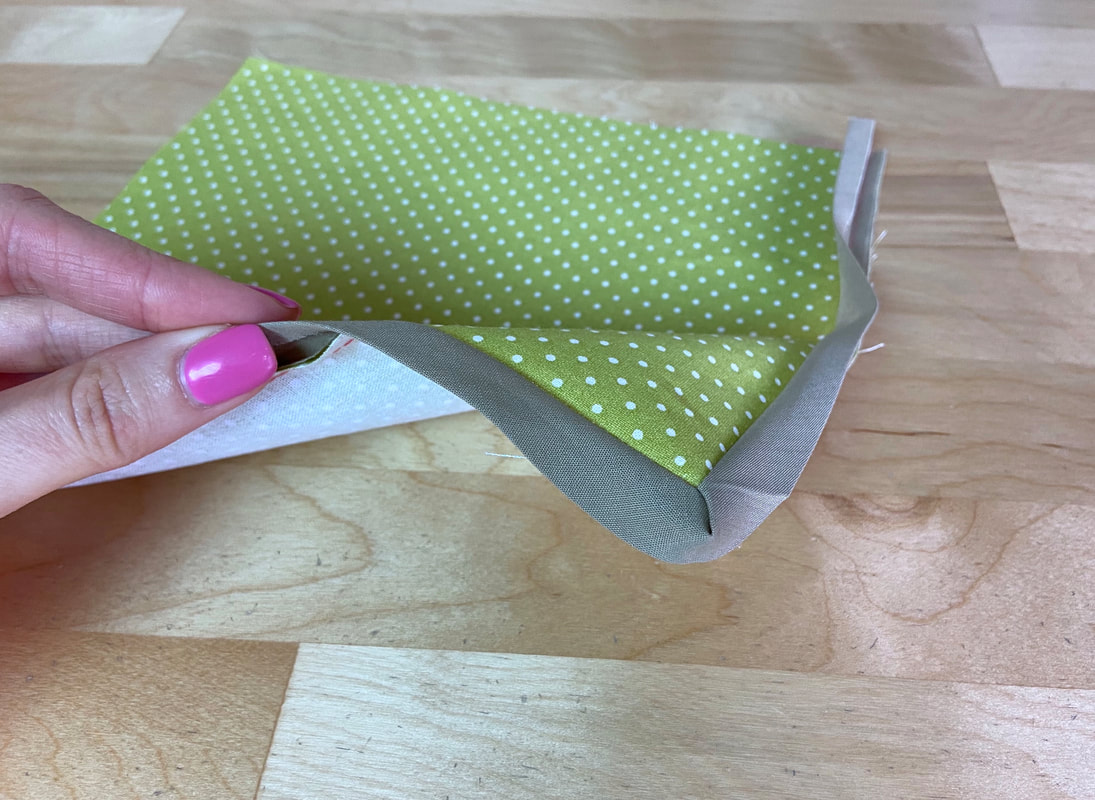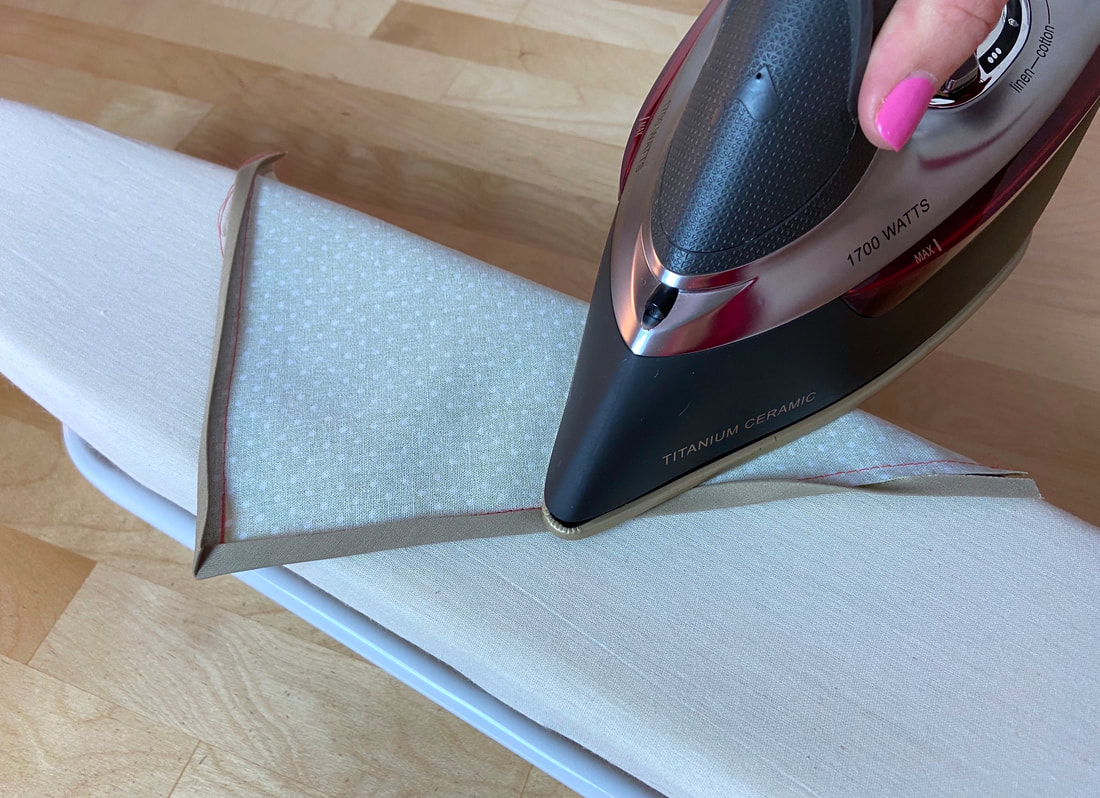Mini Tutorial: Mitering Fabric Corners With Exposed Binding
Mitering fabric corners with exposed binding serves just as much of a functional purpose as it does decorative. The binding strip encases the fabric corner remaining visible on both the right and wrong side of the application.
For this finish, the fabric corner and its intersecting edges should have no seam allowance. If your fabric has seam allowance, trim it off following the designated seamlines.
A single fold binding is the easiest to use for this application. You can purchase pre-packaged single fold binding or make it at home using the fabric/color of your choice.
In this tutorial, the bias binding is cut from a contrast fabric and pre-folded in a single fold style:
For this finish, the fabric corner and its intersecting edges should have no seam allowance. If your fabric has seam allowance, trim it off following the designated seamlines.
A single fold binding is the easiest to use for this application. You can purchase pre-packaged single fold binding or make it at home using the fabric/color of your choice.
In this tutorial, the bias binding is cut from a contrast fabric and pre-folded in a single fold style:
1. Start by cutting your fabric strip at the desired width (1" in this example) and fold each lengthwise edge inward, toward the fabric wrong side, such that both raw edges meet at the center of the strip. It is easiest to fold the edges one at a time.
2. If you fabric corner has seam allowance, trim it off along both vertical and horizontal edges. To facilitate this process, draw or transfer your seamlines directly on the wrong side of your fabric then follow these lines in the cutting process.
3. Open one of the binding's lengthwise edges and align it to the fabric's vertical edge with fabric face sides touching. Insert pins perpendicularly to secure the matching edges.
4. Stitch the two edges together following the binding's folded line as a guide. Stop the stitch at the finished corner point- it helps to mark this point with a quilting pencil or tailor's chalk as shown above. Backstitch at the end of your stitch.
5. Next, fold and iron the bias binding such that the binding's raw edge aligns with the fabric's horizontal edge. The resulting folded edge created by the binding is aligned to the fabric's vertical edge as shown. This process should feel fairly intuitive with the edges falling perfectly in place.
6. Align the binding's raw edge to the horizontal fabric edge and insert pins perpendicularly to secure.
7. Starting at the corner edge, stitch the binding to the fabric layer following the binding's crease line as a guide.
8. Once stitched, bring the bias binding over the raw fabric edges toward the wrong side of the fabric. You should notice a little diagonal fold forming at the corner.
9. Position the other binding fold such that it fully encases the fabric corner and iron to secure the binding in this position as shown above.
Although you can seal the bias binding using a simple topstitch, you'll see best results with a hand-applied slipstitch.
A slipstitch is a a blind stitching technique which leaves no visible stitching on the face of the application, and is barely noticeable on its wrong side.
To seal the binding with a slipstitch, stitch through about 1/4" of the folded binding edge then catch 1-2 threads from the fabric surface underneath (next to the existing machine stitch). Continue slipstitching until the binding is fully sealed and all raw edges are permanently encased.
A slipstitch is a a blind stitching technique which leaves no visible stitching on the face of the application, and is barely noticeable on its wrong side.
To seal the binding with a slipstitch, stitch through about 1/4" of the folded binding edge then catch 1-2 threads from the fabric surface underneath (next to the existing machine stitch). Continue slipstitching until the binding is fully sealed and all raw edges are permanently encased.

